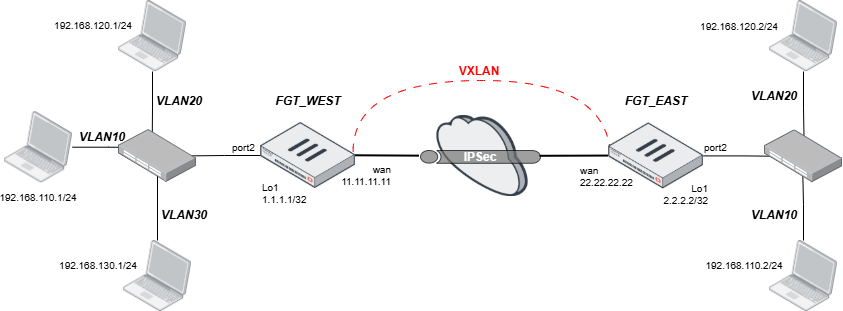- Support Forum
- Knowledge Base
- Customer Service
- Internal Article Nominations
- FortiGate
- FortiClient
- FortiADC
- FortiAIOps
- FortiAnalyzer
- FortiAP
- FortiAuthenticator
- FortiBridge
- FortiCache
- FortiCare Services
- FortiCarrier
- FortiCASB
- FortiConverter
- FortiCNP
- FortiDAST
- FortiData
- FortiDDoS
- FortiDB
- FortiDNS
- FortiDLP
- FortiDeceptor
- FortiDevice
- FortiDevSec
- FortiDirector
- FortiEdgeCloud
- FortiEDR
- FortiEndpoint
- FortiExtender
- FortiGate Cloud
- FortiGuard
- FortiGuest
- FortiHypervisor
- FortiInsight
- FortiIsolator
- FortiMail
- FortiManager
- FortiMonitor
- FortiNAC
- FortiNAC-F
- FortiNDR (on-premise)
- FortiNDRCloud
- FortiPAM
- FortiPhish
- FortiPortal
- FortiPresence
- FortiProxy
- FortiRecon
- FortiRecorder
- FortiSRA
- FortiSandbox
- FortiSASE
- FortiSASE Sovereign
- FortiScan
- FortiSIEM
- FortiSOAR
- FortiSwitch
- FortiTester
- FortiToken
- FortiVoice
- FortiWAN
- FortiWeb
- FortiAppSec Cloud
- Lacework
- Wireless Controller
- RMA Information and Announcements
- FortiCloud Products
- ZTNA
- 4D Documents
- Customer Service
- Community Groups
- Blogs
- Support Forum
- Knowledge Base
- Customer Service
- Internal Article Nominations
- FortiGate
- FortiClient
- FortiADC
- FortiAIOps
- FortiAnalyzer
- FortiAP
- FortiAuthenticator
- FortiBridge
- FortiCache
- FortiCare Services
- FortiCarrier
- FortiCASB
- FortiConverter
- FortiCNP
- FortiDAST
- FortiData
- FortiDDoS
- FortiDB
- FortiDNS
- FortiDLP
- FortiDeceptor
- FortiDevice
- FortiDevSec
- FortiDirector
- FortiEdgeCloud
- FortiEDR
- FortiEndpoint
- FortiExtender
- FortiGate Cloud
- FortiGuard
- FortiGuest
- FortiHypervisor
- FortiInsight
- FortiIsolator
- FortiMail
- FortiManager
- FortiMonitor
- FortiNAC
- FortiNAC-F
- FortiNDR (on-premise)
- FortiNDRCloud
- FortiPAM
- FortiPhish
- FortiPortal
- FortiPresence
- FortiProxy
- FortiRecon
- FortiRecorder
- FortiSRA
- FortiSandbox
- FortiSASE
- FortiSASE Sovereign
- FortiScan
- FortiSIEM
- FortiSOAR
- FortiSwitch
- FortiTester
- FortiToken
- FortiVoice
- FortiWAN
- FortiWeb
- FortiAppSec Cloud
- Lacework
- Wireless Controller
- RMA Information and Announcements
- FortiCloud Products
- ZTNA
- 4D Documents
- Customer Service
- Community Groups
- Blogs
- Fortinet Community
- Knowledge Base
- FortiGate
- Technical Tip: Encapsulate VLAN tag inside VXLAN u...
- Subscribe to RSS Feed
- Mark as New
- Mark as Read
- Bookmark
- Subscribe
- Printer Friendly Page
- Report Inappropriate Content
| Description | This article describes how to encapsulate VLAN tag inside VXLAN using same VNI over an IPsec deployment using different methods. | ||||||||
| Scope | FortiGate v7.4 and v7.6. | ||||||||
| Solution |
The following infrastructure diagram consists of 3 VLANs (10, 20 and 30) in the WEST side and 2x VLANs (10 and 20) in the EAST side. The objective is to enable Layer 2 traffic between both sites using a single VNI. For this purpose, the VLAN tag will be encapsulated inside the VXLAN. This scenario is applicable when Layer 2 traffic from multiple customer VLANs must be supported, with a dedicated VNI for each customer.
Note: connection between switches and FortiGate are in trunk mode.
There are two ways of doing this:
Note: the IPsec config is omitted because it is a simple IPsec tunnel site to site, no specific configuration is needed.
In this config example, after creating the VXLAN, new VLAN interfaces should be created (vxlan10 and vxlan20), they should use the 'vxlan' interface as a parent interface instead of the physical FortiGate interface - tagged with the corresponding VLAN ID. This will ensure that the Layer 2 traffic will be tagged and encapsulated by the VXLAN to the remote site. After that, these interfaces should be used in a software-switch, one per vlan-vlanx pair.
The final result will be Layer 2 traffic (tagged) from multiple VLANs using the same VNI.
The following is a packet capture taken on-wire, after the frame egressed from the FGT_WEST WAN interface.
ICMP (echo request) will be tagged using VLAN ID 10 and encapsulated by the VXLAN with VNI 100. This traffic is then encapsulated by ESP and flows to the remote site which is decapsulated in the reverse order.
Note: the IPsec config is omitted because it is a simple IPsec tunnel site to site, no specific configuration is needed.
In this second method, there will be no VLAN interfaces created in the FortiGate. Instead of creating all the VLAN interfaces using the physical interface and the vxlan interface, the physical port (port2) will be added to the software-switch.
This method requires less configuration, however, FortiGate will encapsulate into the VXLAN all the tagged traffic received, even if the other side will not have the VLAN (in this example, VLAN 30).
Here is a pcap taken on-wire, after frame egressed from FGT_WEST wan interface.
ARP request from VLAN 30 will reach FortiGate port2 and this traffic will be encapsulated by the VXLAN with VNI 100. This traffic is then encapsulated by ESP and flows to the remote site which is decapsulated in the reverse order.
However, the remote site does not have VLAN 30, so VXLAN traffic is flowing for non-existing VLANs in the remote side. Trunk on the switches should be adjusted to permit only the necessary VLANs to prevent unnecessary VXLAN traffic when this method is used.
Related documents: |
The Fortinet Security Fabric brings together the concepts of convergence and consolidation to provide comprehensive cybersecurity protection for all users, devices, and applications and across all network edges.
Copyright 2025 Fortinet, Inc. All Rights Reserved.


